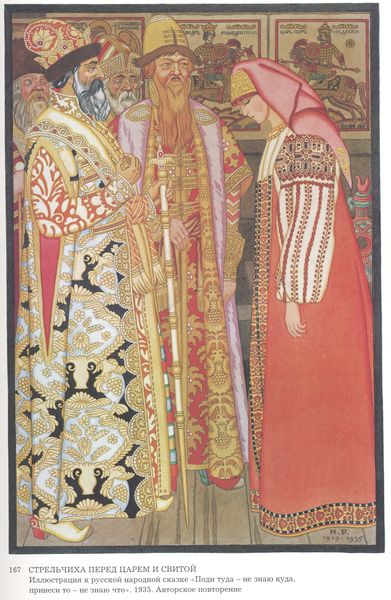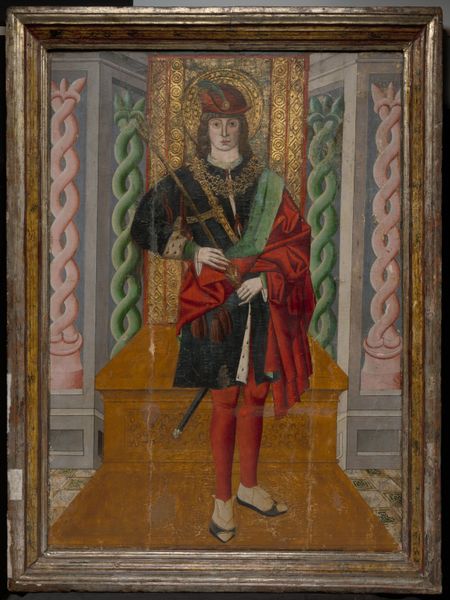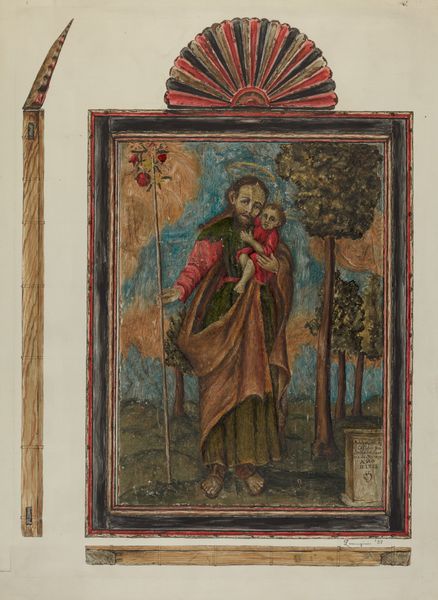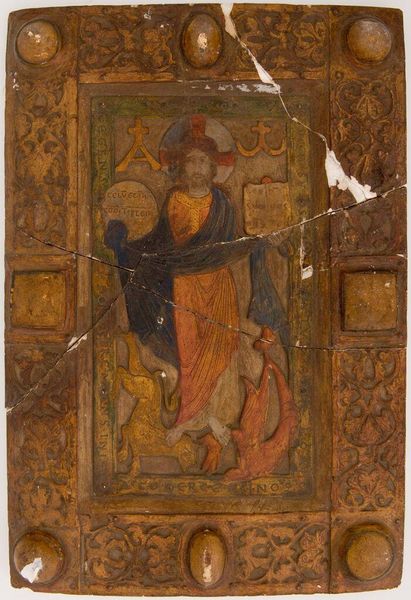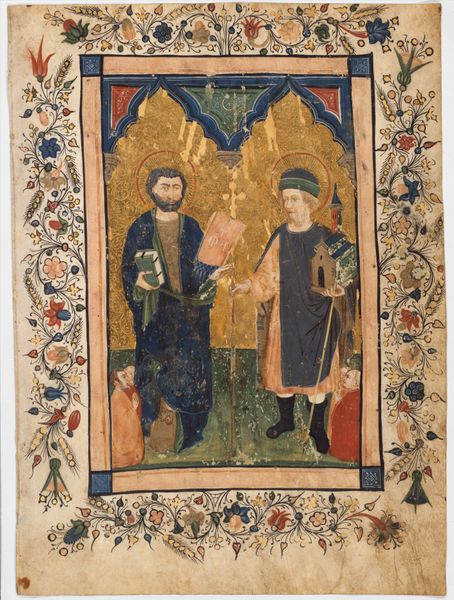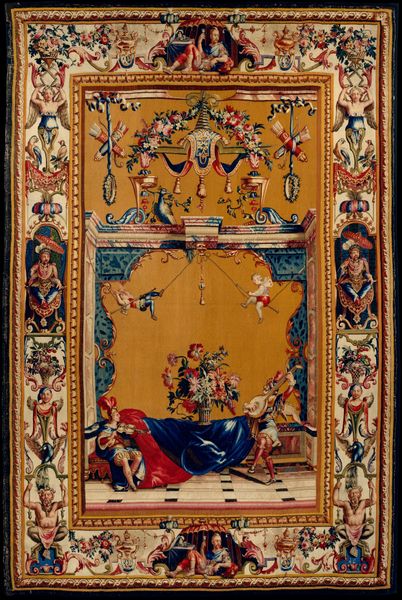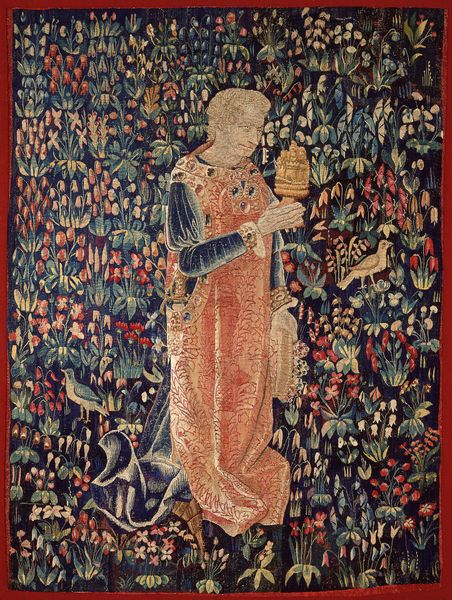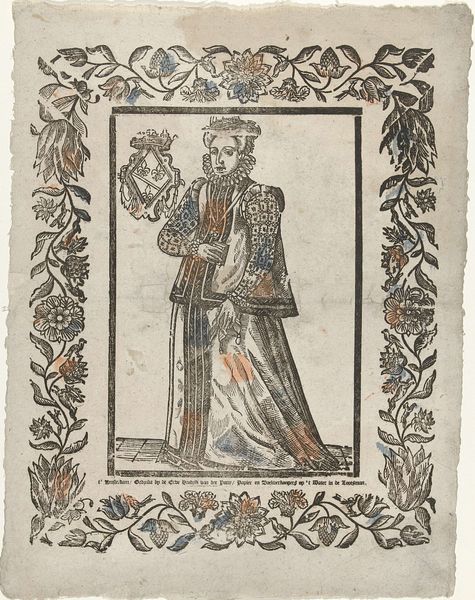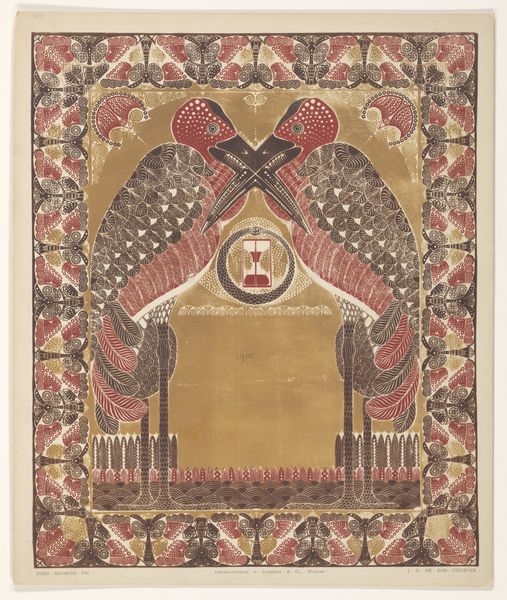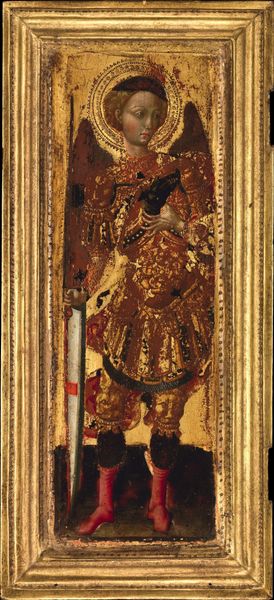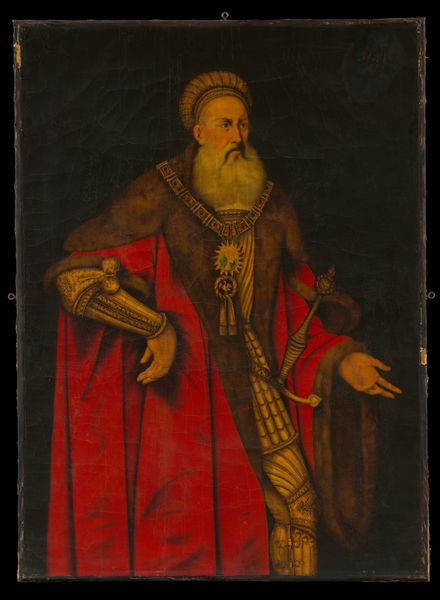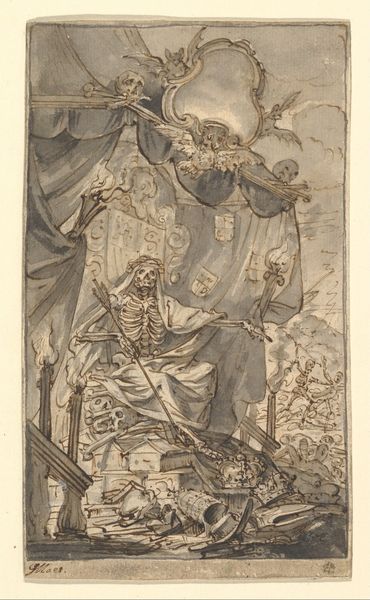
textile, sculpture
#
portrait
#
textile
#
mannerism
#
text
#
11_renaissance
#
oil painting
#
sculpture
#
men
#
history-painting
#
decorative-art
Dimensions: H. 106 1/2 x W. 73 inches (270.5 x 185.4 cm)
Copyright: Public Domain
This tapestry, depicting Augustus I of Saxony, was woven in the late 16th century by Seger Bombeck, a time when rulers sought to legitimize their power through carefully crafted visual narratives. Note Augustus's bare feet. The act of depicting a ruler barefoot has a lineage stretching back to antiquity. In ancient Rome, it signified divinity or heroism, seen in statues of gods and emperors alike. Yet here, in the context of the Reformation, it takes on a different hue. It subtly alludes to humility and a connection to the earthly realm, resonating with Protestant ideals of piety and simplicity. The intention seems to be to ground the ruler in a sense of relatable humanity. The recurrence and adaptation of this symbol speak to the enduring human need to negotiate power, divinity, and mortality, constantly resurfacing and evolving across time. The bare feet serve as an uncanny reminder of the timeless dance between the sacred and the secular.
Comments
No comments
Be the first to comment and join the conversation on the ultimate creative platform.
